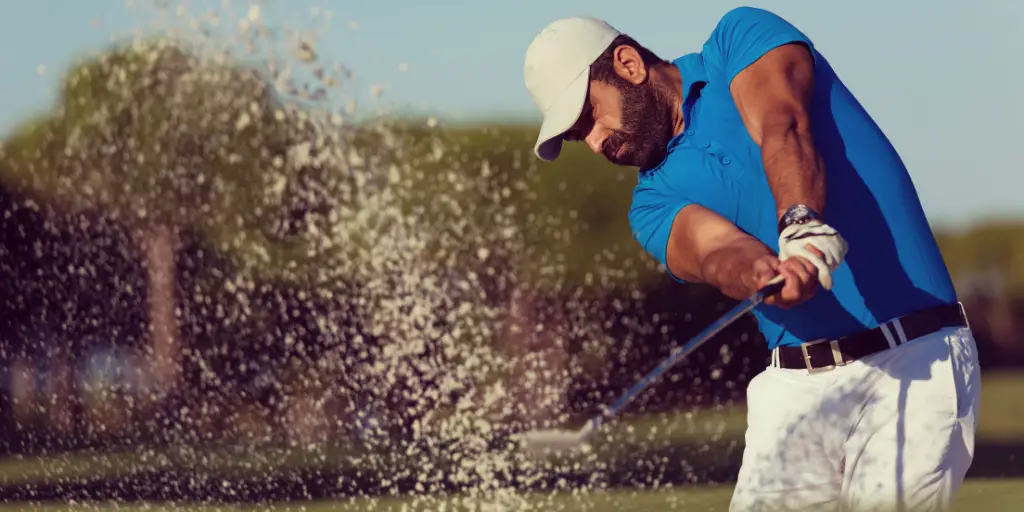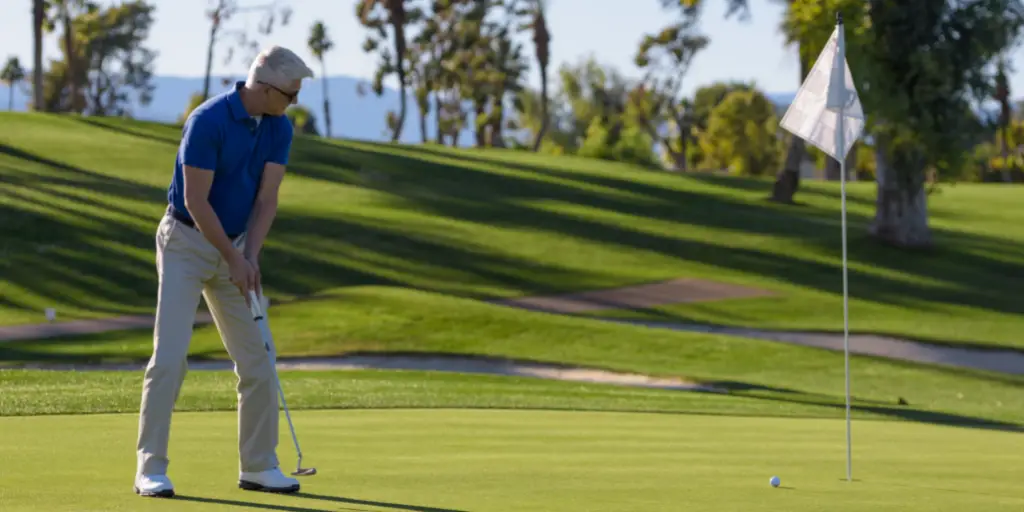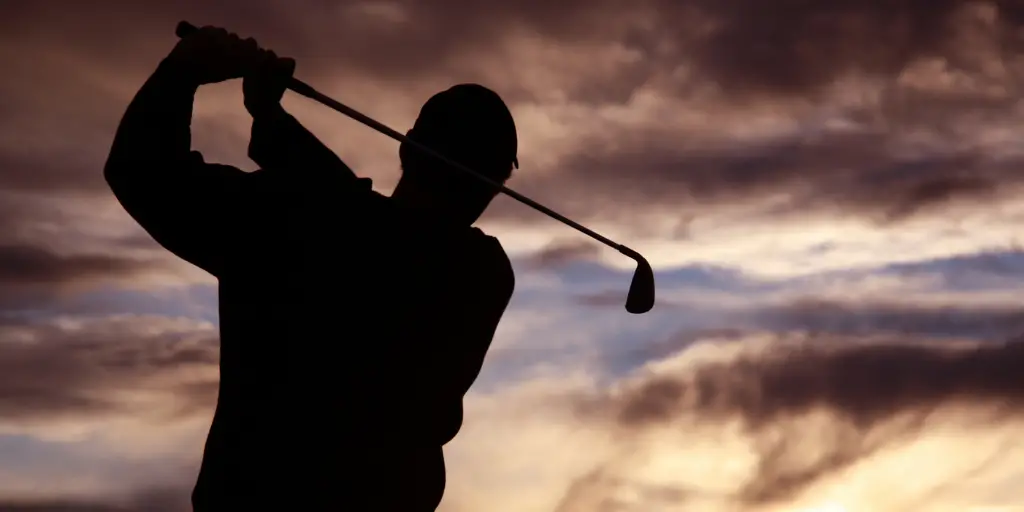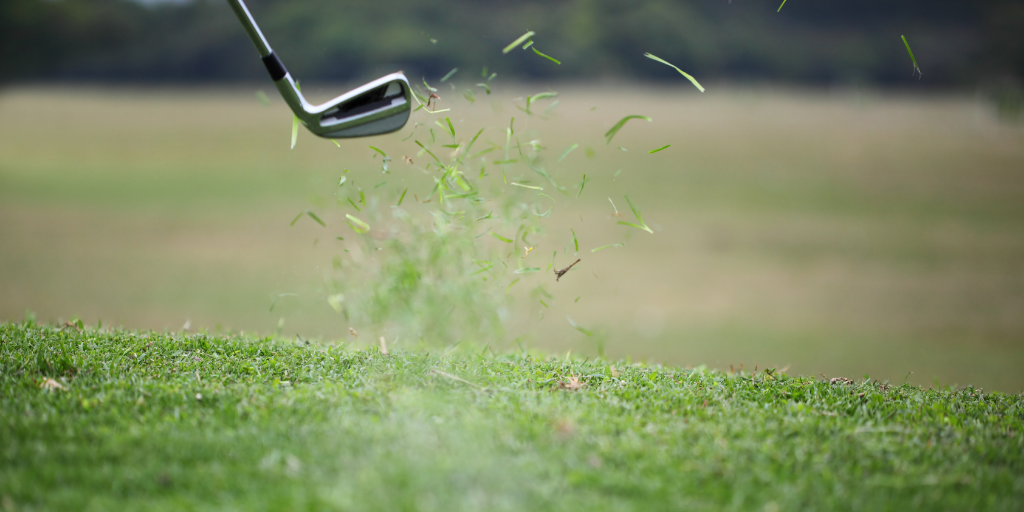You use your putter at least twice as much as any other club in your bag, so any effective putting tips should be like gold to a beginning golfer. The following list is the 12 best putting tips we can offer and we hope it changes your putting game for the better.
1. Get Fitted
The website, golfwrx.com estimates that about 95% of golfers have never been fitted for a putter. A putter fitting consists of getting the right shaft length, the correct grip size for your stroke, and the right putter style for your stroke and experience.
All of these things are extremely important in your putting game, but the vast majority of golfers, pro and amateur alike, skip this very important aspect of putting…The Right Fit.
Our advice is to get fitted before even considering a putter. Make sure you go somewhere for the fitting rather than doing it online so that you can actually hold the putter in your hand. Find the putter that fits your height, your stroke, and your grip so that you can never blame the equipment again when you miss a putt!
2. Get The Newest Technology
Technology changes all of the time, and that phrase is especially true when it comes to golf equipment. Putters and drivers, more than any other clubs, have undergone some of the biggest technology transitions lately.
In the past, everyone used a blade because of the look and feel it provided. Recently, mallet putters, with high MOI, great alignment tools, and sweet spots that encompass the entire face have become more popular. New face technology and precision grooves have allowed the softness and feel that used to be reserved for blades to be found in mallets and even many touring pros are making the switch.
Make sure you do your research and find out what the newest technology is and how it can improve your putting.
3. “Line Up” Your Ball
There is a lot of debate today about whether or not you should putt with a line on your ball to help with alignment. The idea that a line on your golf ball can help with alignment, among other things, is the whole theory behind Callaway’s “Triple Track” line of putters and golf balls.
The idea is that you take a sharpie and make a line about 1 inch in length on the ball. You then point this line towards your target path and use it as an alignment aid for your putt. Tiger is famous for using this method to aid him.
Not everyone will see the advantage of this method of learning. For instance, if you haven’t learned to read greens yet, then starting the ball on the line that you have chosen may not mean much.
Also, there are some players, like Rory McIlroy, that using a line makes them feel like they are lining up incorrectly. These players are referred to as non-linear putters and adding a line for these players will do more harm than good.
Here’s a good image of what it looks like:
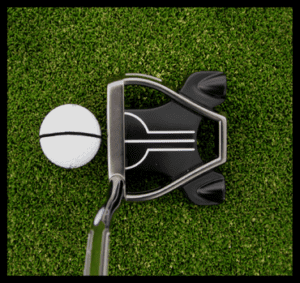
4. Take Lessons
If you really want to get good at golf, you should take lessons pretty early on in the process. If you find a good instructor, that instructor will take time to teach you some of the basics of the putting stroke.
A good putting stroke is not necessarily a natural thing that you can teach yourself and even the best golfers in the world have instructors that work with them.
One of the best thing you will learn with putting lessons is drills that you can do later that will keep your putting stroke at optimal levels.
5. Use a Forward Press
The forward press is a putting and chipping stroke where the grip of the club remains perpendicular to the ground for as long as possible throughout the stroke.
This keeps the clubhead low to the ground which both takes away potential for error and allows the ball to hug the surface of the green to develop true roll more quickly. This stroke also relies on the pendulum motion exclusively because you need turn in your shoulders to accomplish it. If you use the forward press, we would suggest finding a mallet putter.
6. Understand Left Hand/Right Hand Rules
This is a simple concept that can change your putting if done correctly. For a right-handed golfer, your right hand provides the power and feel while the left hand provides stabilization and is more or less along for the ride. It is not dissimilar to a good jump shot where the left hand is there to stabilize while the right hand performs the bulk of the work.
7. Think “Feel and Roll”…Not Hit
Putts should never feel “hit.” Many golfers try to “hit” long putts and decelerate over short putts, both of which lead to errors in your putting game.
The answer is to think of your ideal swing length for each putt so that your backswing and through swing always rely on feel and roll rather than the strike. If you focus on swing length then your acceleration and tempo remain the same on every putt that you make.
One thing that helped to begin with was to place my back foot the same distance behind the ball that I wanted my backswing to be. I knew that I have drew the club back even with my backfoot then I had gone far enough and I could start my through swing.
Another tip is to make your practice swing the same length as your actual swing is going to be for that putt.
8. Keep Your Head Down
If you have never had someone tell you to keep your head down while playing golf, then you have never been on the course with a more experienced friend, family member, or golf instructor. It is usually the first and last thing anyone will tell you about your swing.
Our tendency is to look and see the results before we even do the work. It is like a wide receiver who starts running before securing the ball, a baseball player turning their head during the swing, or a tennis player moving to the net prior to completing their approach shot.
Keeping your head down means to watch the ball and then watch the spot where the ball was until your swing is completely over.
9. Learn To Read Greens
You can start the ball on the line you chose perfectly, strike the ball purely, and have great speed, but if you cannot read the greens none of that matters.
Every green is unique. There are slight undulations, huge breaks, and fast downhills that you have to take into account on some courses. Some courses play soft and slow while others are like putting on concrete. Learning to read greens takes experience and skill.
On top of that, your putt starts out at a higher speed than it finishes so a break at the end of a putt will move your ball more than one at the beginning. The key is to learn to read the greens so that you can start the ball on the right line every time.
10. Find Your Line
Finding your line and then getting the ball started on that line is so important in putting. One of the easiest and best ways to find your line is to choose a spot about 8-12 inches that your ball has to travel over to be on the right line.
This aids in alignment, but it also gives you a very achievable target especially for long putts. Where it would be very difficult to have the hole in view, if you know where the ball needs to start, then you can pick a target to aim at that is very close to the ball and therefore much easier to hit.
11. Don’t Focus On Results
This is a very difficult proposition but a very important one. There are so many things that go into making a putt, that you have to focus on the things that you can control when you are standing over the ball.
You can control the speed with which you swing, you can control your alignment, and you can control choosing the spot a few inches in front of the ball that you want to aim for. You cannot put the ball in the hole yourself.
You have to rely on the fact that everything else you did will get the ball as close as possible on longer putts and in the hole on shorter ones.
12. Practice
There are 3 things that you can do to ensure that your putting will improve over time. Those things are as follows: Practice, Practice, and Practice.
Technique is important, theory is very helpful, and understanding your stroke will help you improve. If you are not out on the course or range practicing, however, you will never get better at putting.
The feel and confidence that comes from sinking putt after putt on the practice green is more important than anything a tutorial can teach you. Use putting drills, training aids, and practice greens as much as you need, but just get out there and putt and you will improve.
Final Thoughts On Putting Tips
I hope you enjoyed the list of putting tips, and I am sure if you follow these tips your putting will improve pretty quickly. Remember that putting is the stroke most related to scoring and you use your putter at least twice as much as you use any other club in your bag. Treat it that way and spend the time and effort that is needed to make you a top notch putter.
If you learned something from these tips and if your putting has improved, let us know in the comment section. Ask us any questions that you may have about your putting stroke, and share with your friends so that they can learn and improve with you.


